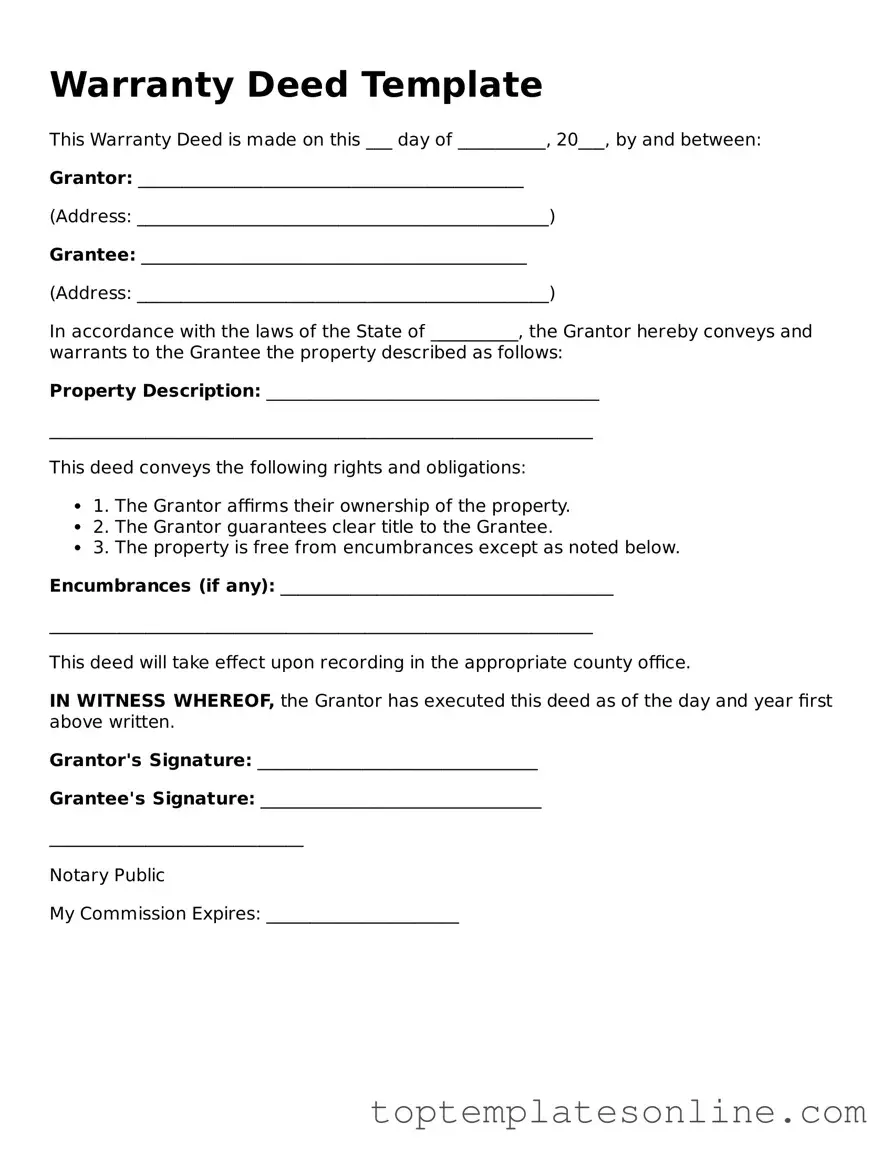The Deed form plays a crucial role in real estate transactions, serving as a legal document that transfers ownership of property from one party to another. It outlines essential details such as the names of the grantor and grantee, a description of the property, and the terms of the transfer. Various types of deeds exist, including warranty deeds, quitclaim deeds, and special purpose deeds, each serving specific purposes and providing different levels of protection for the parties involved. Understanding the significance of this form is vital for anyone engaged in buying or selling property, as it ensures that the transfer is legally binding and protects the rights of both the seller and the buyer. Additionally, the Deed form must be properly executed, which includes signatures and, in some cases, notarization, to be valid. This document not only facilitates the transfer of ownership but also serves as a public record, providing transparency in property transactions.
